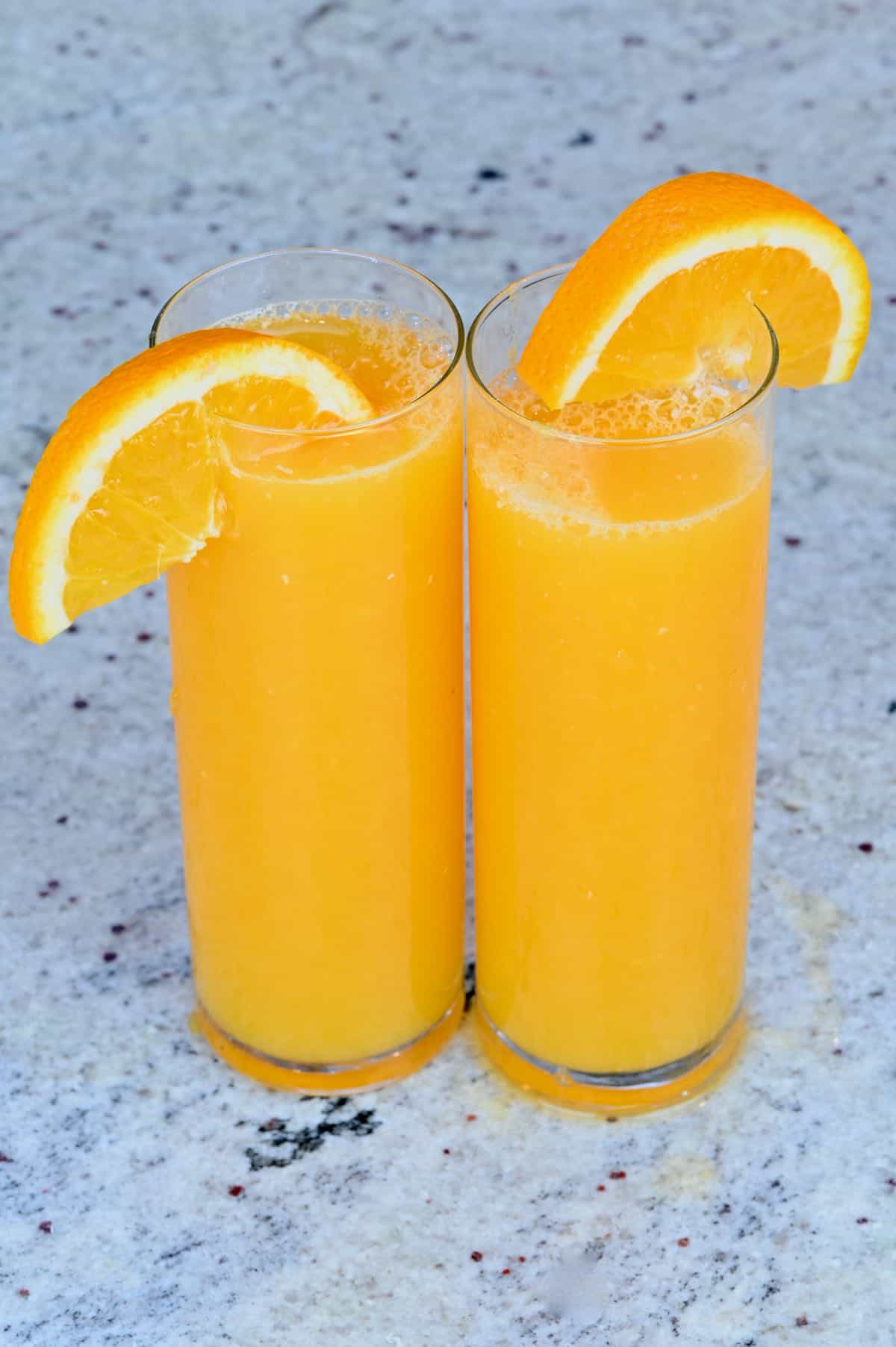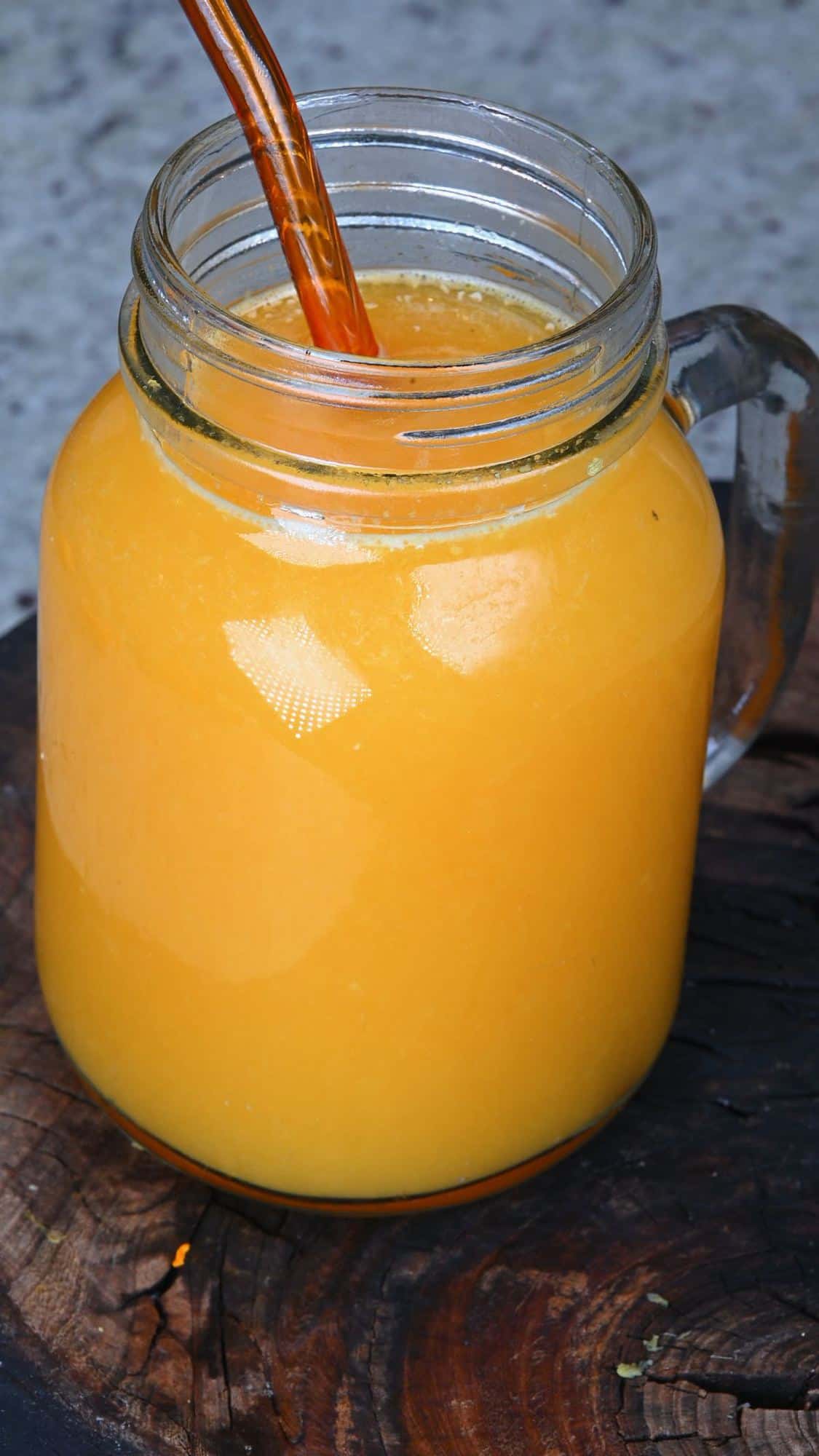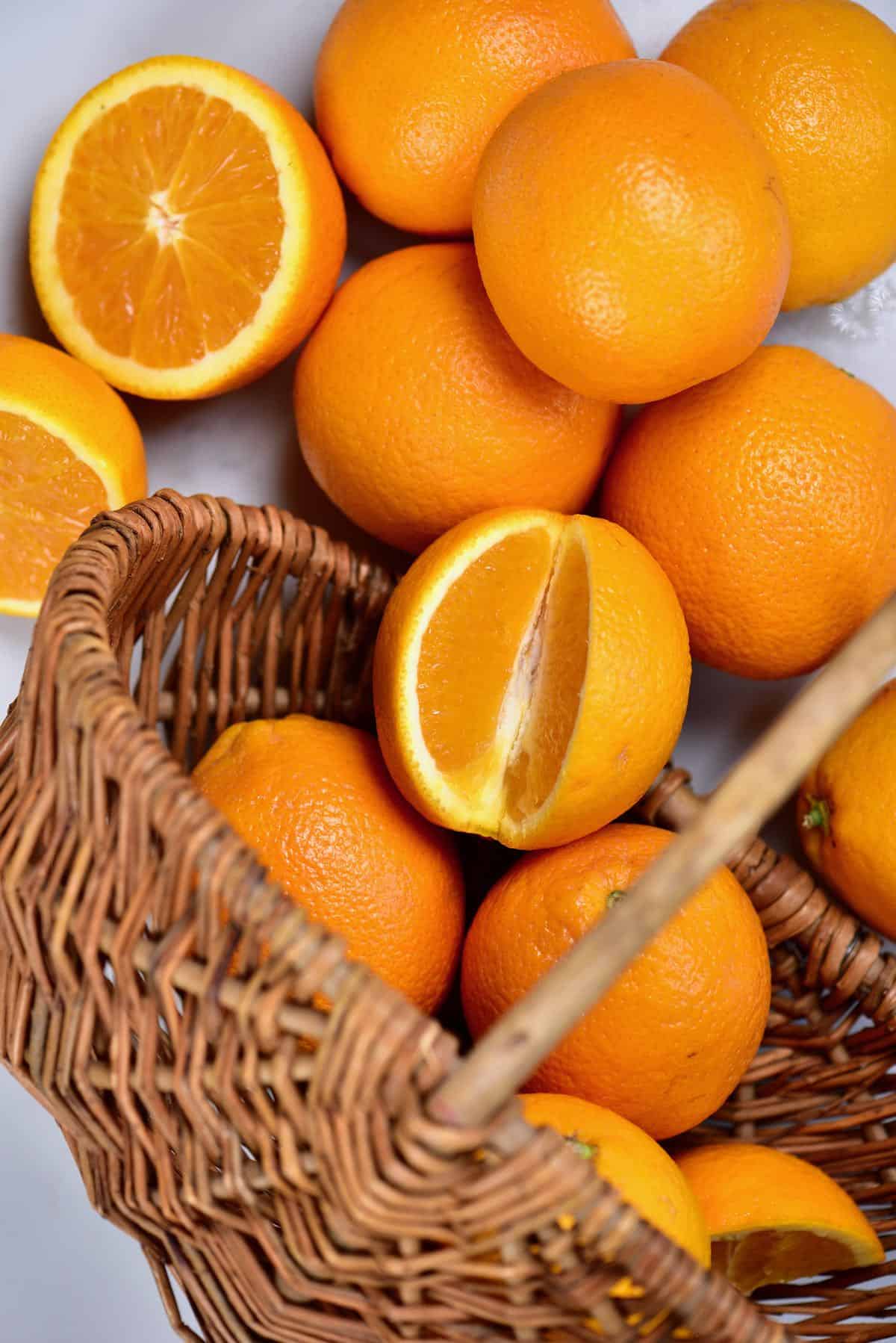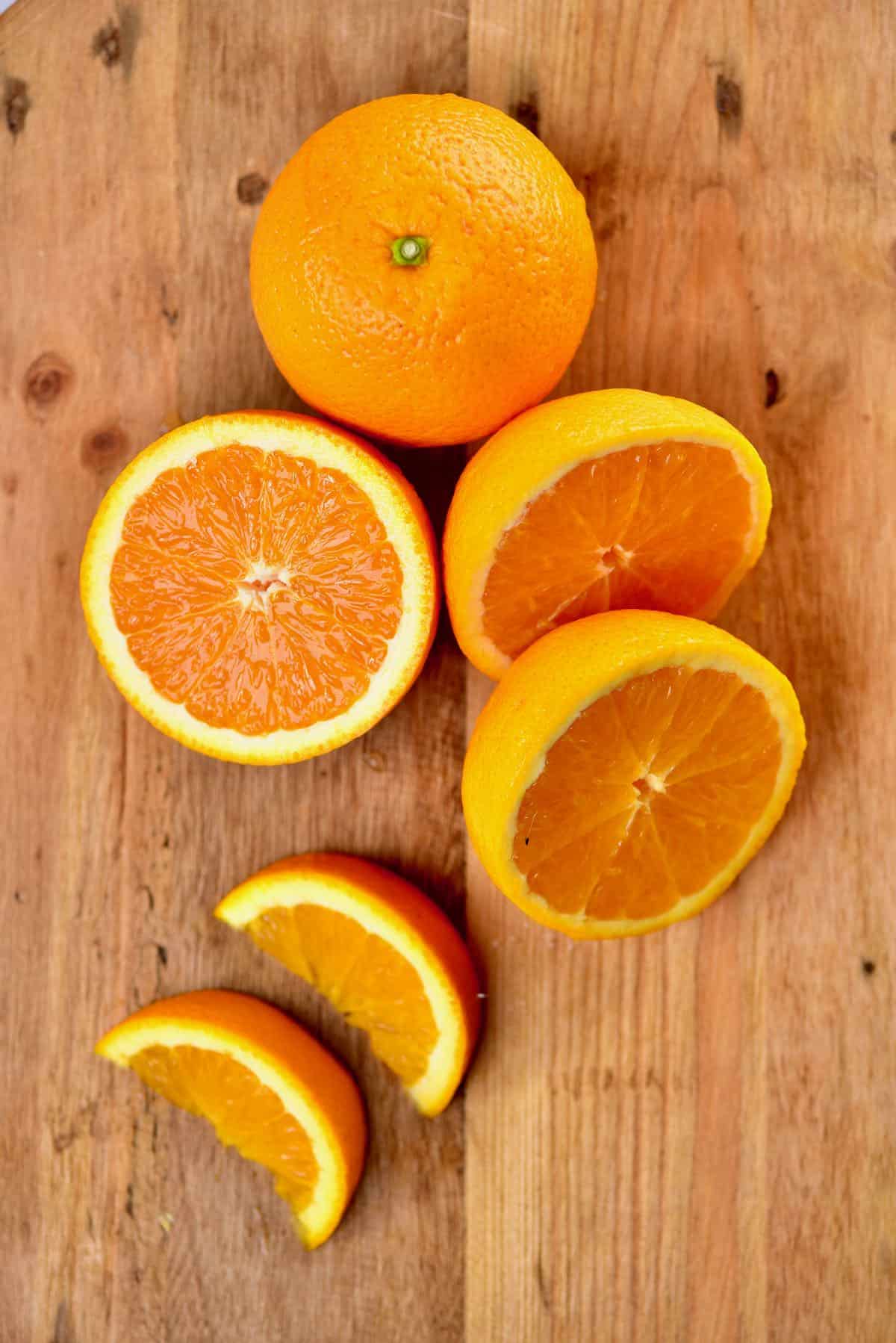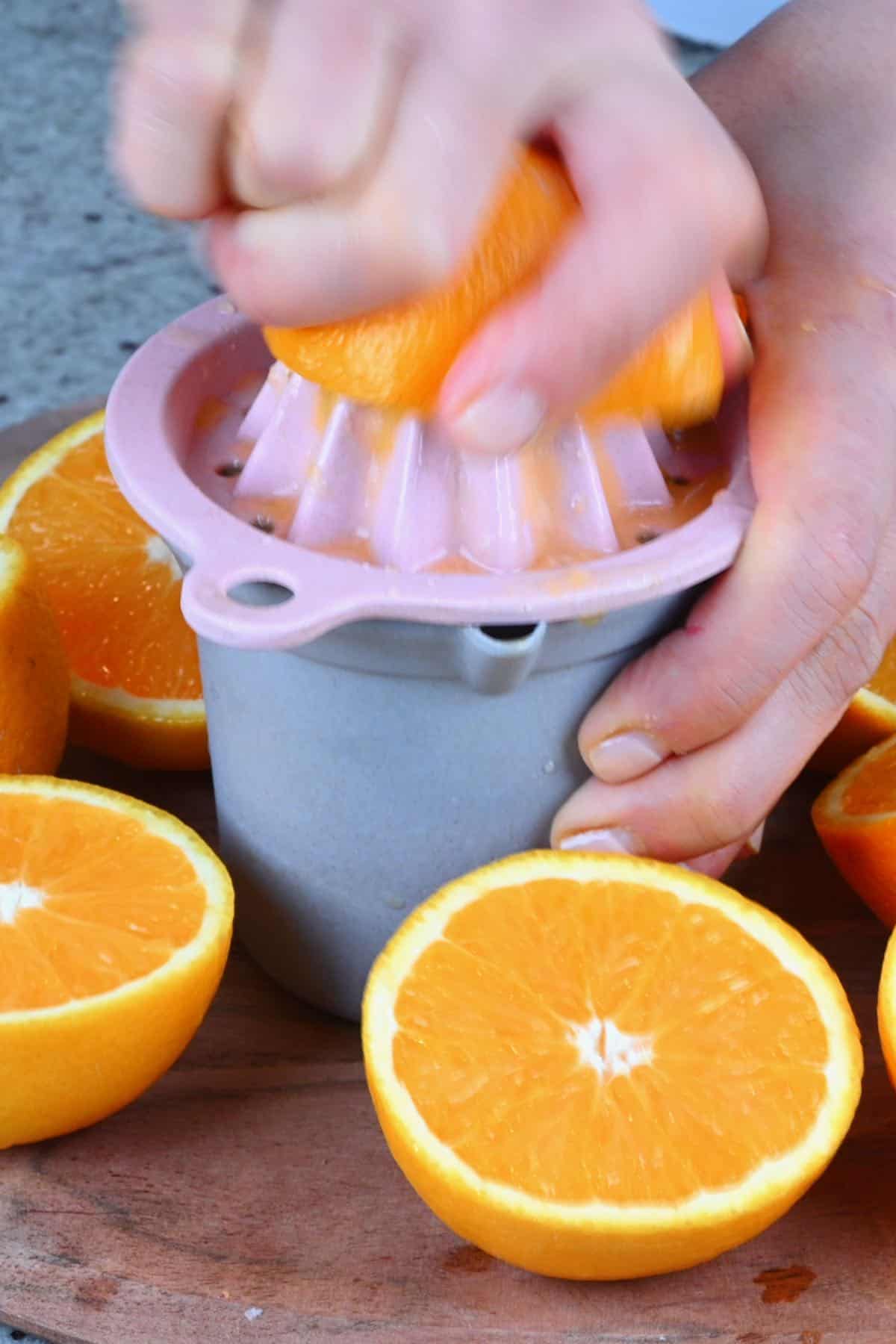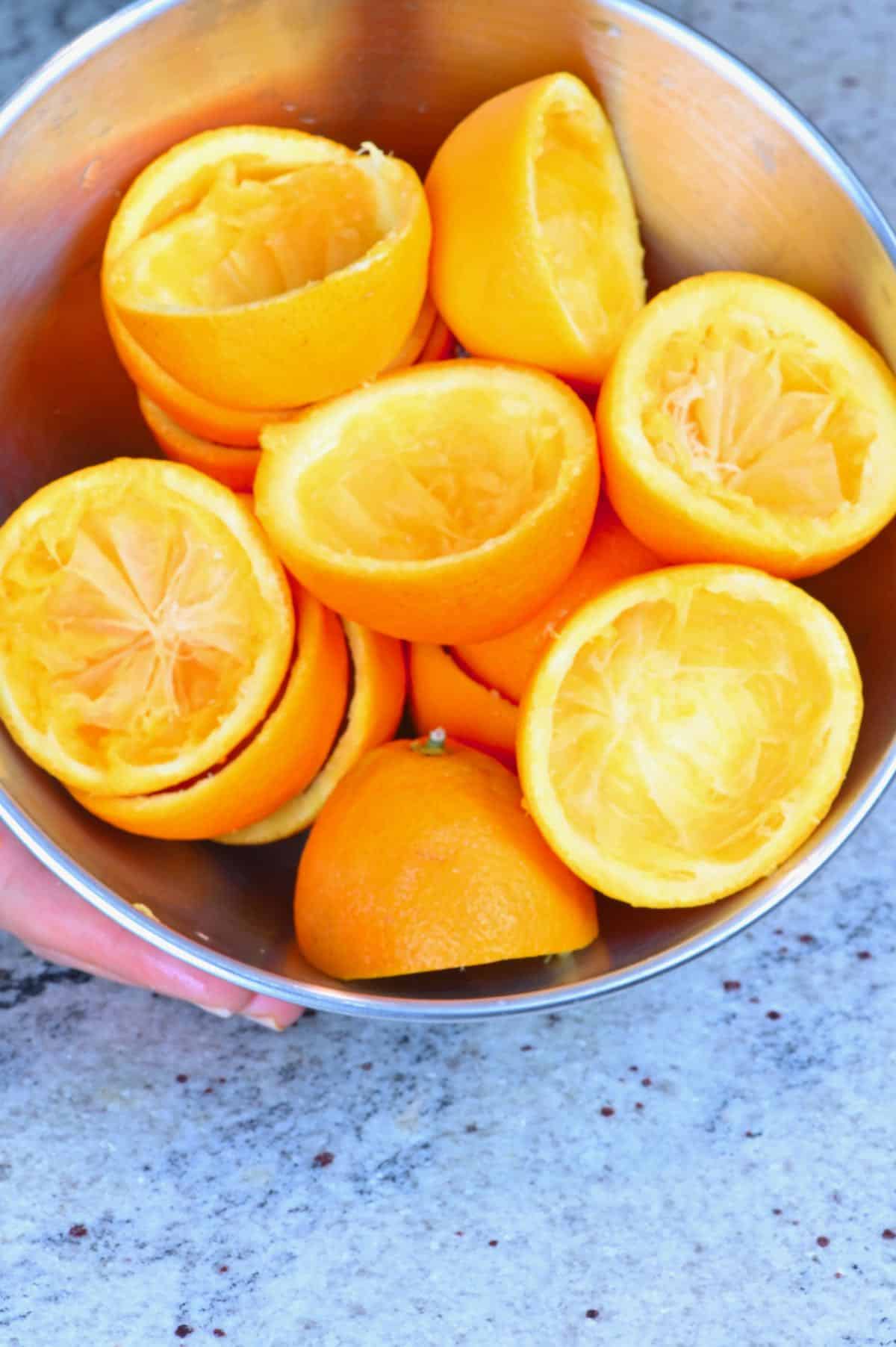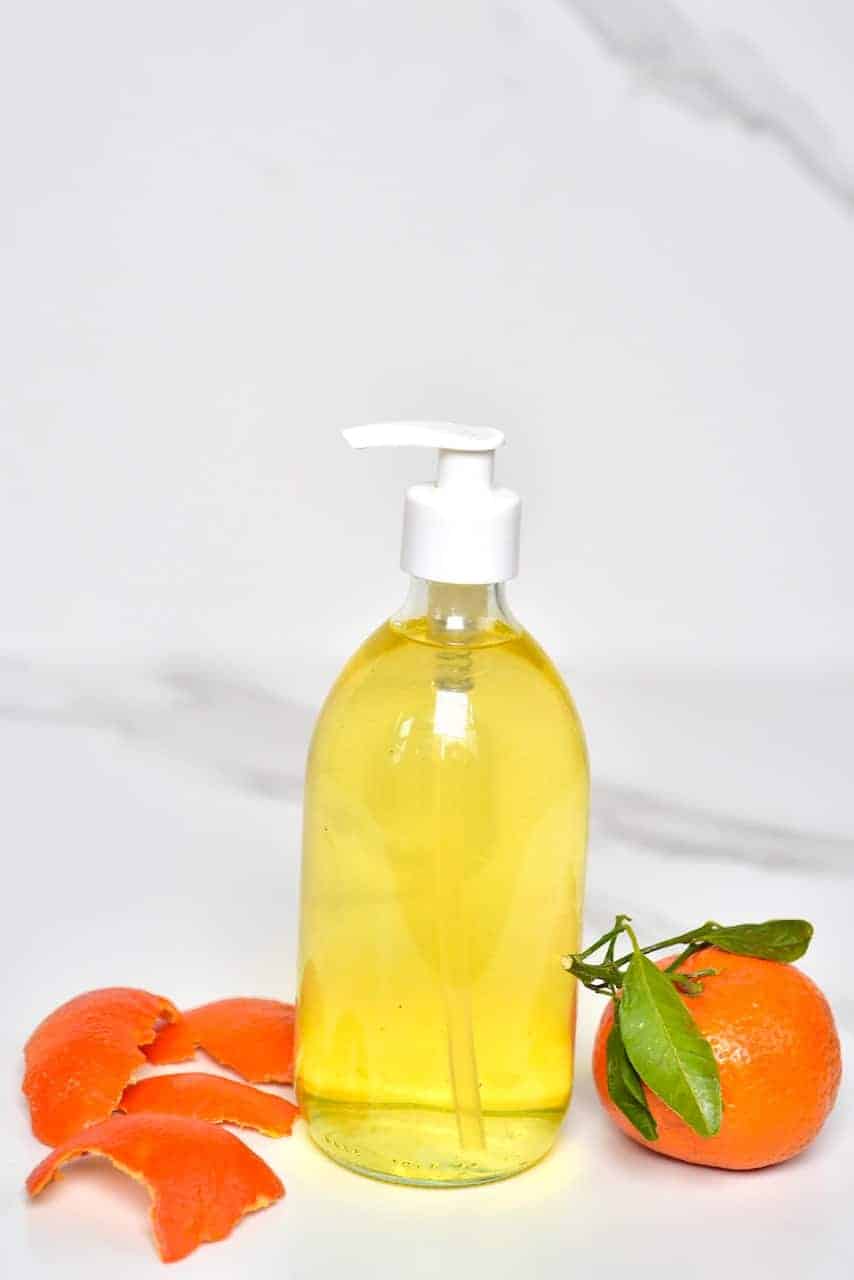Making freshly squeezed orange juice may take a little more effort than picking up a juice box from a store, but the difference in the quality of flavor and freshness is incomparable. Fresh orange juice is fruity and sweet – so much sweeter than any ‘from concentrate’ OJ in stores and with no added sugars or anything ‘nasty.’ More than that, when making orange juice at home, you can choose if you want orange juice with pulp or without. Not to mention that it is full of vitamins and health benefits. Sugar-free orange juice has never tasted so good as when it’s straight from the fruit!
Is orange juice good for you?
There are several main health benefits of oranges. Most people are aware that this zesty fruit provides tons of Vitamin C. In fact, one medium cup of orange juice provides almost 100% of your daily recommended Vit C. However, it also contains several other vitamins and minerals, including Vitamin A, calcium, folate, and iron. Vitamin C helps to support our immune systems, help with gum health, wound healing, and bone formation (Source). Meanwhile, Potassium helps to decrease the risk of heart disease, strokes, and bone loss. It also helps regulate blood pressure and reduce the risk of kidney stones. Folate is essential for pregnant women and reduces the risk of birth defects, and OJ is one of the best natural sources (source). Even better, orange juice is high in antioxidants, which are great for fighting harmful free radicals and protecting against several chronic conditions and containing anti-inflammatory properties. In fact, one of the only downsides of drinking orange juice (or large amounts of any fruit juice) is the amount of natural sugars in the juice. For that reason, I tend to drink homemade orange juice once or twice a week, freezing leftovers to pop into smoothies in smaller doses or thaw at a later time.
How to make orange juice
With a Juicer
Prepare the oranges by first peeling them. Then, chop them into smaller parts to fit your juicer chute. Feed a few into your juicer chute at a time – voila.
With a Blender
Peel the oranges and, optionally, remove and discard the seeds (if you’re going to strain the juice then this isn’t necessary). Add the orange segments to a blender. You can add a little water to help them blend if needed (1/4 cup should be more than enough not to water it down too much). Blend into a juicy, pulpy consistency. Then sieve the resulting pulpy juice through a sieve or nut milk bag or alternatively if you like orange juice with pulp (for more nutrients too) then leave it as is.
With a Handheld Juicer
This probably doesn’t need much of an explanation. If you have a citrus juicer at home, simply chop the fruit in half, place it over the juicer, press down, and squeeze while rotating back and forth to get as much juice out as possible. For orange juice with pulp, just spoon some directly out from the remaining orange (after squeezing the juice out) and add to your glass.
How to store
Fresh squeezed orange juice is best consumed immediately for the maximum amount of nutrients. However, any leftovers can be stored in an airtight glass container in the fridge for up to 3 days.
What to do with any leftover pulp
Orange pulp can also be frozen into an ice-cube tray for later usage – within smoothies, broths, or baked goods. Alternatively, the pulp can be composted.
What to do with the leftover peel
You can zest some of the skin to add to dishes or to flavor teas, lemonades, or even sugar. Alternatively, make some candied orange peel or, if the halves are in good condition, use them to make orange candles. You can also use all the leftover peels to make your own toxic-free all-purpose citrus cleaner.
Recipe notes
When using methods one or two, you can optionally spend time removing as much white pith from the orange as possible, to avoid bitterness. However, this isn’t necessary and I often don’t do this. If you’re using method three, then rolling the orange back and forth against a counter a few times can help to loosen up the juice – to get more out. You could also microwave the fruit shortly (for just 10-15 seconds), before rolling. Though, if you care about losing nutrients then feel free to avoid any heating. For ‘instant’ chilled juice, leave the orange in the fridge overnight before juicing (or for 30 minutes in the freezer before juicing). You could also add ice though this will quickly water down the juice. If you find a batch to be more bitter than you’d like, you can use a little natural sweetener in the juice. For sugar-free orange juice, you can use sugar-free sweeteners such as erythritol or monk fruit sweetener.
More juice recipes
How To Juice Ginger With and Without Juicer Simple Beetroot And Ginger Juice Recipe Simple Carrot Juice Carrot & Ginger Juice Carrot & Orange Juice How to cut a pomegranate and make pomegranate juice How to make wheatgrass Shots and Juice Green Detox Celery Juice Blend Ginger Turmeric Immune-Boosting Energy Shots (juicer recipe)
If you try this fresh-squeezed orange juice recipe, let me know your thoughts and any questions in the comments. Also, feel free to tag me in your recreations @AlphaFoodie.





